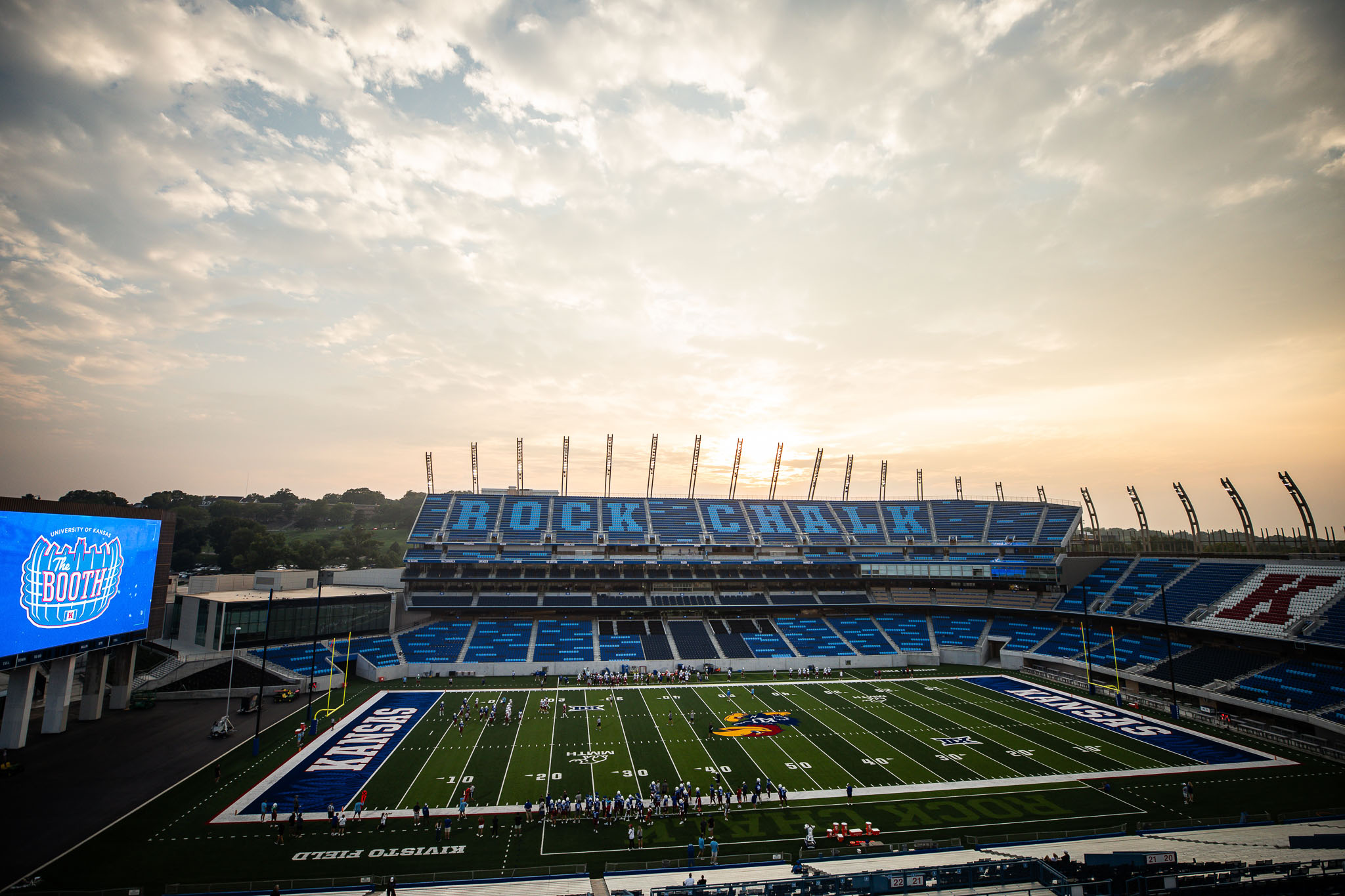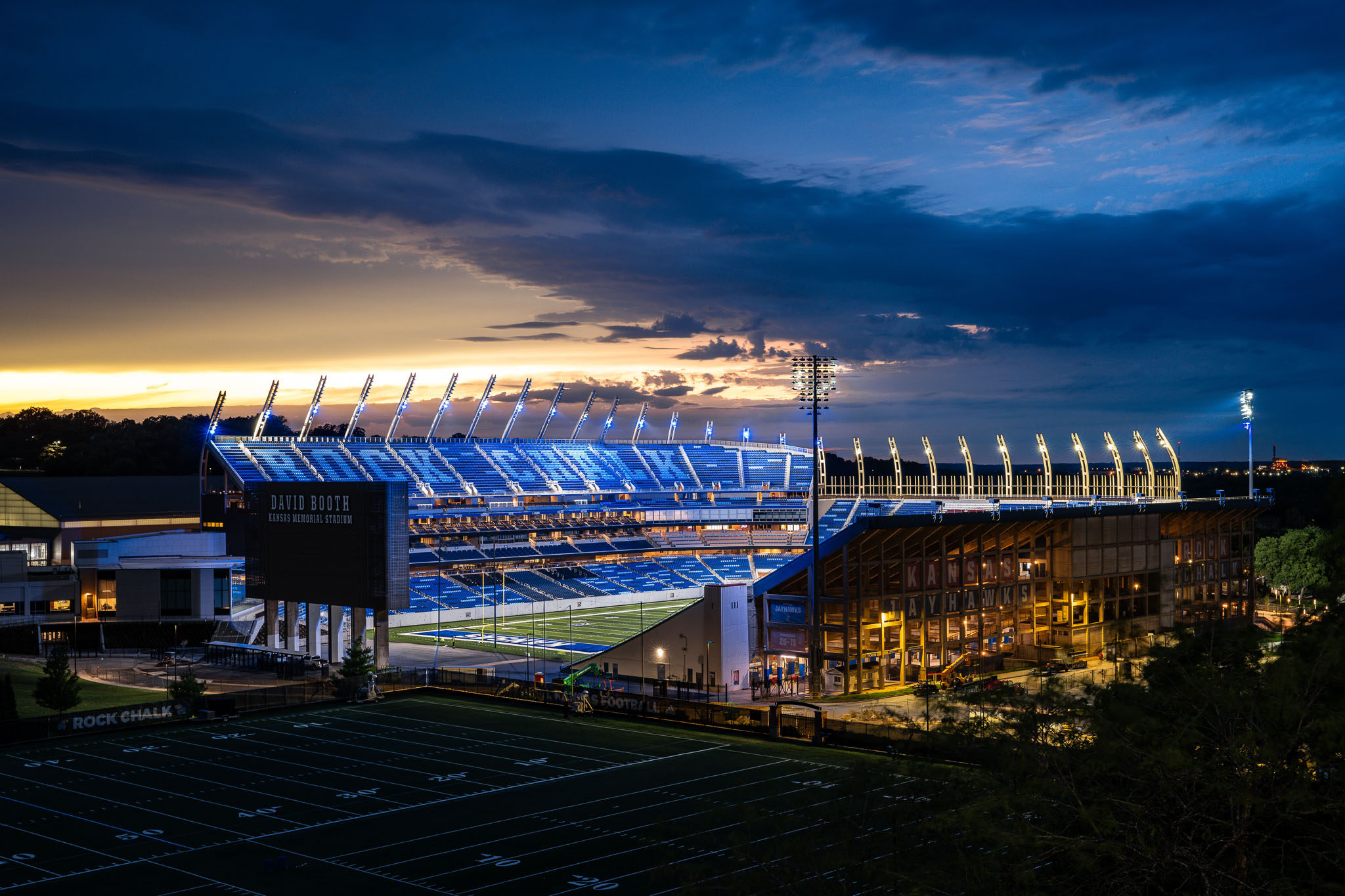

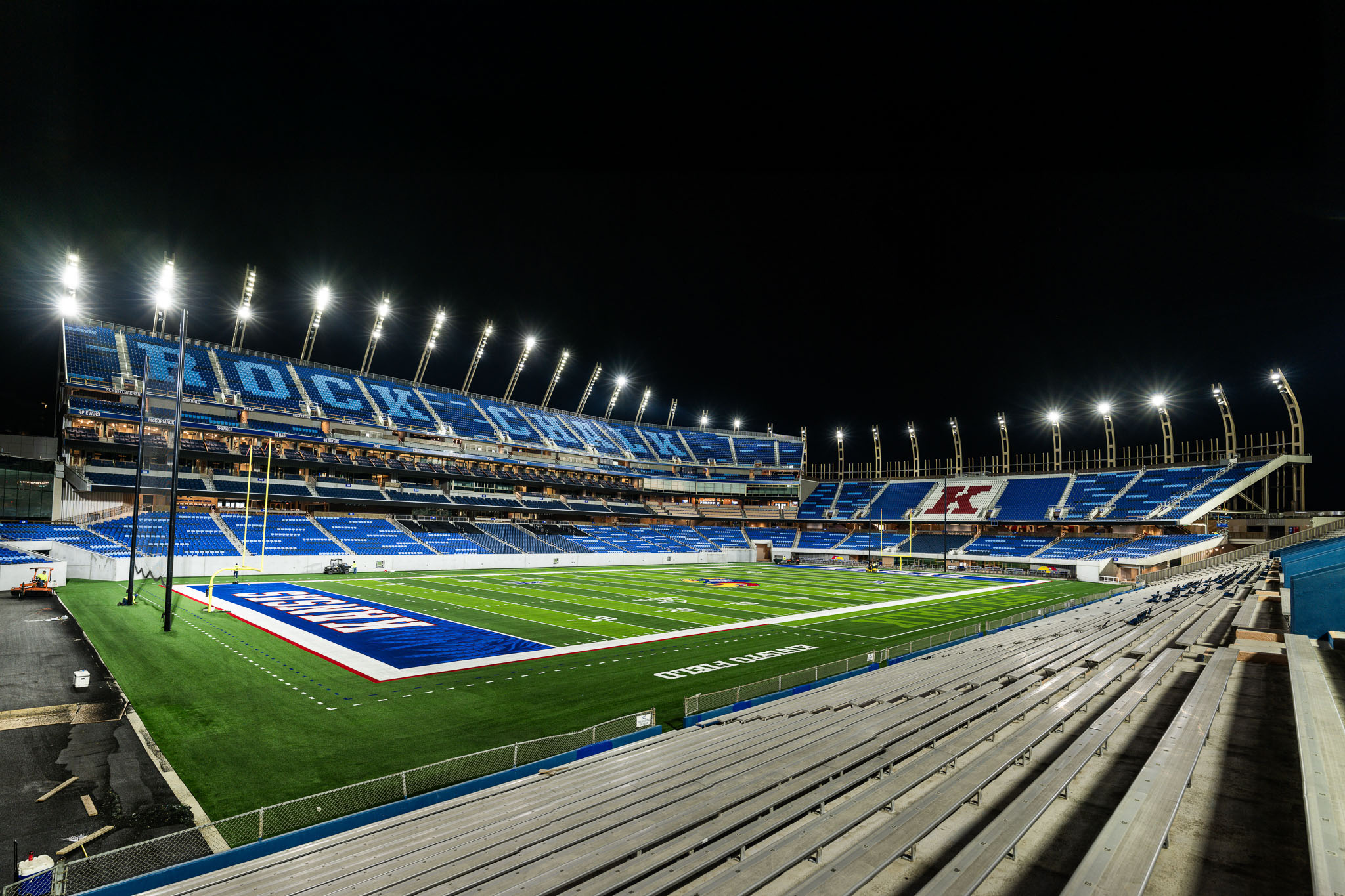
The University of Kansas has officially opened the reimagined David Booth Kansas Memorial Stadium and the newly completed Anderson Family Football Complex, marking the completion of Phase 1 of the Gateway District—a transformative, multi-phase development that redefines the campus's northern gateway and introduces a new model for integrated sports, civic, and community design.
Designed by HNTB and Multistudio, the project transforms three already-connected buildings—a training facility, a stadium, and a conference center—into a seamlessly interwoven, multi-use venue. The result is a stadium complex that supports not just game-day operations, but year-round activity—from athlete training and university events to fan experiences and public gatherings.
Rather than designing around distinct silos—a stadium, a training facility, and a conference center—the team capitalized on their existing physical integration to reconfigure how the spaces operate together. The result is a hybrid building system that blurs programmatic boundaries and unlocks new possibilities for use and revenue.

The Anderson Family Football Complex, which was structurally integrated with the stadium before this renovation, has been reconfigured to support expanded use including a new team room that looks out onto the field. Other amenities include new dining spaces, meeting rooms, and rooftop areas that serve as both daily athlete amenities and rentable public-facing venues. The project leverages that duality not as a compromise, but as a design strategy.
"This design isn’t about creating more space—it’s about making the most of what’s already connected,” said Ryan Gedney, Chief Design Officer at HNTB. “By treating overlaps between team operations, fan experience, and public programming as assets—not boundaries—we’re rethinking how venues deliver value, all year long.”
The newly opened stadium also introduces a restructured seating bowl with improved sightlines and increased fan proximity to the field. Enhanced concourse circulation, upgraded accessibility, and diverse new premium seating options—including clubs, ledge suites, and loge seating—contribute to a more immersive and comfortable game day experience. Dimensional Innovations led the stadium’s graphics and wayfinding, with Multistudio designing select elements including the new conference area and the World War I Memorial.
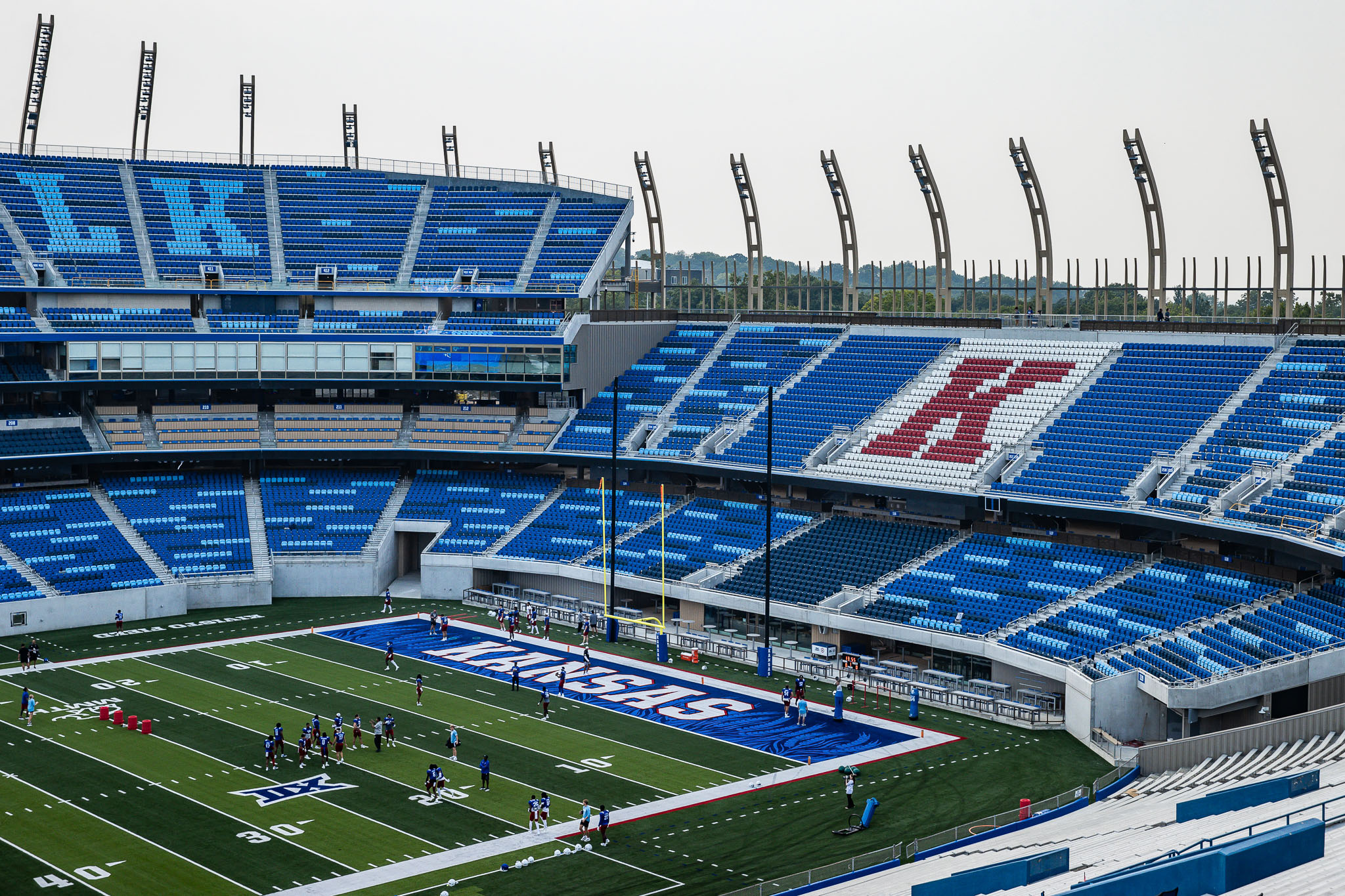
The project sits at the intersection of 11th and Mississippi Streets, a point that now serves as both the symbolic and functional front door to the university. Designed as a landscape-driven district rather than a stand-alone venue, the Gateway District prioritizes walkability, interconnected outdoor spaces, and civic flexibility.
"The Gateway District isn’t just a setting, but a system, "said John Wilkins, Principal at Multistudio. “We’re designing a district that runs on shared energy—between athletics and academics, the university and the city, weekday and weekend. This is a place that connects ideas, people, and opportunities in real time.”
The new Gateway District advances the model of multi-use collegiate venues by fully embracing physical integration as a design and operational asset. In doing so it establishes a precedent for future campus-adjacent developments that aim to serve more of the campus and community across a variety of uses more often and in a more connected way.
The project also signals a shift in how university athletics infrastructure can be funded and programmed. With state, donor, and private development support, the Gateway District demonstrates how design can serve as a strategy—creating facilities that not only meet program needs but also unlock new sources of public and private value.
“A highlight of the project, and certainly a primary reason we’re so proud of the outcome, has been working with two elite architecture firms in HNTB and Multistudio,” said Travis Goff, Director of Athletics at the University of Kansas. “Their cutting-edge style, attention to detail and eye for design is precisely why the NEW Booth hits the mark. They have exceeded core tenets of our commitment - no bad seats, exceptional fan amenities, a unique palette, and Kansas story-telling at every turn. It has been a rewarding bonus that both are local firms with deep connections to the University of Kansas.”
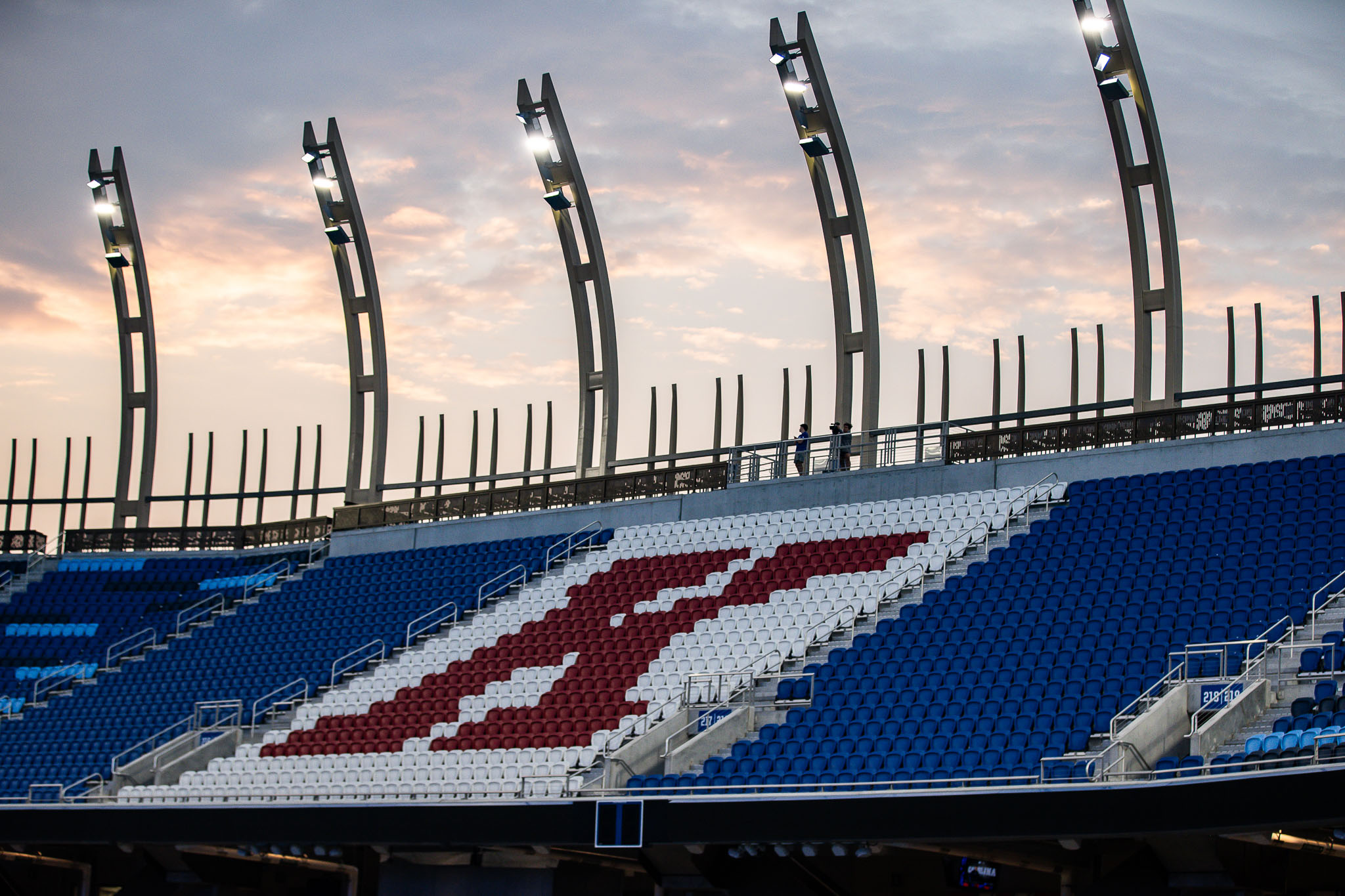
With Phase 1 now complete, future phases of the Gateway District will introduce new academic and hospitality facilities, student housing, retail, and a 20,000-square-foot plaza designed for community events and outdoor programming. These components will extend the district’s impact and help position KU as a national leader in integrated campus development.
